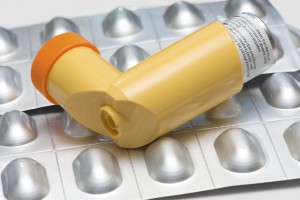 In our previous blog, Florida Lung, Asthma and Sleep Specialists (FLASS) introduced you to the asthma triggers that infest a beautiful spring day. We also gave you some tips for coping with the difficulties inherent in this fine season.
In our previous blog, Florida Lung, Asthma and Sleep Specialists (FLASS) introduced you to the asthma triggers that infest a beautiful spring day. We also gave you some tips for coping with the difficulties inherent in this fine season.
Asthma Triggers: Spring Strikes Indoors
“Triggers are allergens, irritants, or conditions that cause your asthma symptoms to worsen. It’s important to know what triggers your asthma symptoms. Triggers vary from person to person, so you will have to learn which ones are problems for you. While it’s impossible to avoid every single asthma trigger, there may be things you can do to help.”
In this, Part Two of our springtime allergy-asthma-triggers blog series, we will be warning you that spring can also give asthma and allergy patients tough time indoors. Part of Your Treatment Plan
Managing your asthma means learning to keep as many spring time triggers out of your environment as possible. In our previous Florida Lung, Asthma and Sleep Specialists’ blog, we tipped you off about one of the largest indoor/outdoor offenders: your own shoes.
They often transfer pollen, dust, and other triggers directly into your home.
Tips for Spring Cleaning Asthma Triggers
- No Sweet Breezes: Sadly, FLASS doctors must advise you to close your windows and utilize your air conditioning. Be certain that your air conditioner has a fresh, clean filter at all times.

- Think Before You Hang: Although they have automatic dryers, many people still love to hang sheets, bedding, rugs and clothes clothesline.
They dry in the soft fresh spring air, but if you live with an asthma patient, think twice. All the allergens and irritants from the air will be brought into house.
- Re-decorate for Asthma: By the way, serious asthma and allergy sufferers often exchange carpets for vinyl, tile or hardwood flooring.
Likewise, they use easy-to-clean shades instead of dust-trapping drapes and curtains.
- Vacuum with Vengeance: Use a vacuum with a double bag, or a HEPA filter.
- Mask and Gloves: Often the very act of cleaning can stimulate asthma and allergy.
If you are an allergy patient, you will be surprised at how much help a simple surgical mask and plastic (not latex!) gloves can be if you are dusting or cleaning and using various cleaning products.
Likewise, if you can “see” dust, pollen or hazy irritants in the air, do not be embarrassed to wear your mask.
6. Your Air Machine: You can find many brands of “portable high-efficiency particulate air (HEPA) filter machines.” Even if you can not install them throughout your home, the patient should sleep with one turned on in the bedroom.
7. Spring Brings Insects: It might surprise you to know that many people with asthma are very allergic to cockroaches. Their dried droppings and remains can trigger asthma attacks.
Spring is a difficult time because our more casual lifestyle tempts us to leave food and garbage out on tables and counters. We advise you to use closed containers for left-over food, and maintain a clean sink.
Roaches also seek water, especially as spring becomes summer, so watch for signs of them around any indoor plants, pet food and water dishes.
Many effective traps are available in retails stores, but be careful with bug poisons, as they themselves can become powerful triggers.
8. Micro-Bugs: Although the big season for dust mites does not happen until warmer weather closer to July, they are still problems, and must be dealt with before an invisible infestation takes over your home. Find out more about getting rid of dust mites at this informative online resource.Again, the most important room in the home, for the asthmatic, is the sleeping room. FLadvises you to be certain you have “airtight, plastic dust-mite covers on pillows, mattresses, and box springs.”
9. Be Careful of Pillow Choices: When you have allergy or asthma, we believe you should use pillows filled with polyester fibers. Remember, “Dust mites like to eat dead skin from pets and humans. You probably shed enough skin a day to feed a million dust mites. Flakes of dead skin in carpeting, beds, and furniture are like tasty snacks for them.”Avoid kapok or feathers.
Likewise, defeat the dust mites with bedding washed “in very hot water (over 130 F) once a week. The water needs to be this hot to kill dust mites. Dry the bedding in a hot dryer.”
With these methods, you can remove the dust mite’s favorite foods and make their environment uncomfortable for them.
10. Good Advice: FLASS agrees with Mayo Clinic advice that “If you have forced air heating or air conditioning in your house use high-efficiency filters and follow regular maintenance schedules. Keep indoor air dry with a dehumidifier.”
In conclusion, we know it is almost impossible to protect yourself from Spring allergy and asthma triggers. We also advise you to follow your treatment plan and maintain your medicines as prescribed. With these precautions, the doctors and staff at FLASS hope you can benefit from these tips and enjoy some of our gorgeous Florida spring weather.


